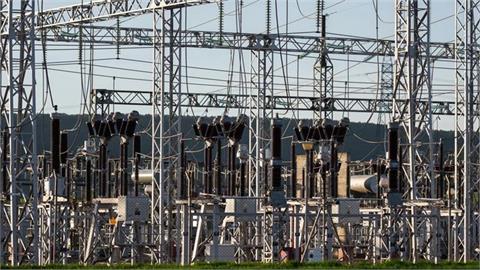by Charles Wessner and Srishti Khemka* The Biden administration’s industrial policy action is built around four major legislative initiatives: the American Rescue Plan Act, the Infrastructure Investment and Jobs Act, the Inflation Reduction Act (IRA), and the CHIPS and Science Act
Among these, a key measure is the Inflation Reduction Act. Specifically, the act includes a broad range of subsidies, incentives, and domestic manufacturing requirements meant to spur green technological innovation in wind, solar, and hydrogen, among others. It also is designed to encourage the purchase of U.S.-made green energy products, no doubt a necessary provision to ensure its passage. These requirements reflect widespread concerns about the state of U.S. manufacturing and the bipartisan belief that the United States needs to use federal dollars to stimulate domestic industry in emerging technologies. It also reflects an ongoing trend toward rewiring global supply chains in order to be more resilient to geopolitical challenges and natural disasters.
From a European perspective, this should be welcome news, as Europe has long advocated for greener industries and for greater U.S. action to advance global sustainability and mitigate climate change. Despite these laudable goals, the Inflation Reduction Act (IRA) has sparked considerable controversy across the Atlantic, as some European leaders have expressed their fear that the subsidies provided in the legislation may boost U.S. progress in green tech by enticing European firms to invest in the United States at Europe’s expense.
Contents of the IRA
While perhaps curiously named, the Inflation Reduction Act is nonetheless one of the most significant pieces of climate legislation in U.S. history, providing about $369 billion worth of incentives to support green energy innovation, manufacturing, and usage. These subsidies include tax credits of up to $7,500 for homeowners to encourage the use of energy efficient products, tax incentives to catalyze private investment and development, and substantial government investments in related federal research. Alongside these incentives and investments are requirements for tax credit-eligible products to be manufactured in the U.S. Importantly, in the case of electric vehicles, the act requires electric vehicles to be built with U.S.-sourced battery components and critical minerals.
While the legislation provides exceptions for countries with which the United States maintains a free-trade agreement, these requirements are intended to reduce U.S. reliance on Chinese suppliers while also encouraging a shift in advanced manufacturing back to the United States. This strategy appears to be succeeding. Since the passage of the IRA, a number of companies have announced the construction of almost 20 new or expanded clean energy manufacturing plants and are potentially creating over 100,000 new jobs in the clean energy sector. This includes major European companies such as Volkswagen, BMW, Italian energy group Enel, and Norwegian battery group Freyr, who have joined other firms in expanding existing plants or building new plants in the United States with the expectation of a growing demand for high quality green products from U.S. buyers.
Europe’s Concerns
European governments have protested these domestic production provisions, arguing that they violate trade rules and unfairly distort the market. These protests reflect European policymakers’ concerns that their companies will be drawn to manufacture in the United States by the potentially powerful combination of federal subsidies and a growing market. They fear that Europe will be unable to capture this large market as companies race to take advantage of the subsidies and expanded market opportunities in the United States created by the IRA. Seeking to ease these tensions, U.S. and EU officials discussed establishing a task force to address European concerns about the IRA at the U.S.-EU Trade and Technology Council in December 2022.
However, adapting the specific provisions of the IRA to address European concerns may prove to be difficult. Congress narrowly voted for the IRA after a number of compromises were carefully negotiated to ensure its passage. This means, notably, that any changes in the sourcing requirements for electric vehicle tax credits will be hard to make. Advocates for U.S. sourcing cite the existing high European tariffs levied on similar U.S. products. Further, in response to the possibility of changes to the IRA, they have proposed legislation that would prevent the Treasury Department from issuing consumer tax credits without strict adherence to the already established domestic requirements.
Europe’s Green Deal Industrial Plan
Given that U.S. policy is unlikely to become more amenable to accommodating European concerns, EU commissioner Thierry Breton noted that for its part, “Europe needs a more agile and favorable regulatory framework in areas like permitting and must also ensure that public money is spent smartly and efficiently.” To this end, the European Commission proposed a European Green Deal Industrial Plan in early February 2023 that will provide $272 billion for green transition and accelerate permitting procedures, while allowing higher borrowing limits and greater flexibility for member states to invest in green technology. It also provides for more robust workforce training and greater direct investment into Europe’s plan for a net-zero industry. The European Union hopes these measures will prevent firms from shifting manufacturing to other places like China and the United States and will accelerate Europe’s goal of becoming the first climate-neutral continent by 2050.
The European Commission and member states met in early February 2023 to discuss next steps in responding to the Inflation Reduction Act and proposed what they call the Green Deal Industrial Plan. While some member states like Italy are urging quick action to address the impending consequences of the IRA, other member states like Germany and the Netherlands are more hesitant to agree to invest heavily in these efforts, not least because many EU members have yet to complete their own analysis of the economic consequences of the IRA. Moreover, some European officials note that there is still a significant amount of public money from the post-pandemic recovery fund that has yet to be expended and that rushing to establish countermeasures to the IRA would be premature and could even create discord in the single market unless carefully negotiated within the bloc. Still, the European Commission did agree to a European sovereignty fund to provide all member states with the opportunity to invest in green energy on the member state level and to ease state aid rules to accelerate company investments in Europe. In short, they have created a license for more robust and less constrained industrial policies.
While the consideration of the Green Deal Industrial Plan will formally occur in March, some European leaders seem to have become less concerned by the IRA provisions since the meeting. For example, European Union executive vice president Margrethe Vestager noted in an interview in late February that according to a closer analysis of the IRA, the main threats to European competitiveness will be limited to a handful of sectors. Moreover, while there is still widespread concern about subsidized U.S. competition, there is now a promising focus on removing bureaucratic barriers and accelerating access to existing funds rather than simply investing more.
The Future of Green Energy Investment
Nonetheless, Europe is clearly poised to make significant legislative efforts to maintain its position in the green technology sector. Commissioner Breton noted the importance of legislation like the IRA in February during an address at CSIS: “It is time to reconcile climate and industry.” It may be that there is also a desire to reconcile European regulations on state aid with new global realities. This coincides with a broader effort among some European policy makers to create a greater degree of what is called strategic autonomy. Concretely, this has meant augmenting regional investments in defense, pharmaceutical research, and semiconductor development, and it is clear that green technology is the next on the list. The underlying question is: Will these incentives and investments be on the scale needed for Europe to compete with the U.S. measures—not to mention China’s—as well as address the inherent attraction of the U.S. market?
While both the United States and Europe have struggled at times to make progress toward a greener economy, the proposed EU investments in green technology would represent a major step toward the twin goals of decarbonizing the global economy and restructuring critical supply chains to decrease dependence on China. Inter-allied competition over the green tech market may be inevitable, even positive, but a greener, more resilient Europe is a good thing in itself. If the long-term impact of the U.S. IRA in Europe is to encourage greater investment and incentives for green technologies, then this will only bring the world to cleaner energy and a more carbon-neutral planet even sooner.
*Charles Wessner is a senior adviser (non-resident) with the Renewing American Innovation Project at the Center for Strategic and International Studies (CSIS). Srishti Khemka is a research intern with the CSIS Renewing American Innovation Project.
(csis.org, March 7, 2023)




